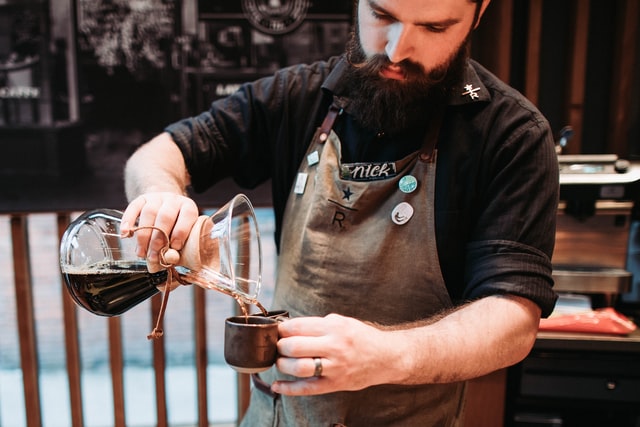
8 Ways To Brew A Better Coffee
Share
Let's be honest - we're all here because we appreciate a good, home brewed coffee. Some of us may be very experienced in this, but we hope a lot of you are also quite new to it because that means our community is growing. Whether you're new or know what you're doing, there's always things we can do to make a better cup of gold, regardless of the time of day.
Here are BeanBurds tips on brewing a better coffee.
1. Use Fresh, Whole Beans
This is essentially our credo. Whole beans are always better than pre-ground because it helps keep the flavour and avoid oxidation. That doesn't mean that any bag of whole beans are perfect, though. The compounds in the coffee beans that make them so flavourful and aromatic start escaping shortly after roasting in a process called degassing and it's for this reason that you want to make sure your beans are also fresh.
So the solution is simple - buy the amount of coffee beans you'll be able to use in a reasonable amount of time (2-3 weeks) and keep restocking fresh. Also, as we've mentioned in previous posts, always grind your beans right before you brew and don't grind so many that you have some left over to get stale.
2. Measure Your Beans
This point really goes back to the end of the last one. Make sure you're grinding and using the right amount of coffee beans each time you brew. Conventional wisdom will tell you to use, for example, 2 tablespoons of coffee for 175ml of water but, the issue here is that, depending on the roast and coarseness of your grind, you're actually ending up with a different amount of coffee each time you brew. That's where scales come in - weigh the beans to make sure you get the right amount for your recipe and to keep it consistent each time.
3. Use the Right Grinder
We've said this in another post, but the right kind of grinder is key to making the perfect coffee. Our recommendation was the Conical Burr Grinder if you have the budget for it, but a Disk of Flat Burr Grinder is also a great choice. These both produce beautiful, uniform grinds to help you get the most flavour while brewing. Don't forget, uniform bean sizes means that each grind is brewed at the same time.
4. Use the Right Coarseness For Your Brew
Not every level of coarseness can be used for every type of coffee or brewing method. We've done a post outlining which level of grind should be used in each case, but don't forget that this can also be specific to the bean as well. The wrong coarseness could result in a coffee that's too acidic or bitter. Be sure to check the recommendations for the beans you're buying!
5. Don't Use Regular Tap Water
The best coffee is brewed using filtered water. Why? Because otherwise you may get impurities in your coffee that disrupt the flavour. Using purified or filtered water allows you to brew a coffee where the aromas and notes aren't upstaged by something wrong in the water. Water makes up over 98% of your cup of coffee. If you're going all out on your beans and equipment, don't make the mistake of using sub-par water.
6. Brew At The Correct Temperature
To get the most out of your coffee beans, you're going to want to hit the 90-95 Celsius range. This is the range in which the flavours are accentuated without getting too bitter. It might sound like overkill, but using a thermometer isn't a bad idea if you want to brew the best.
7. Pre-heat Everything Before You Start
You may see some people pouring boiling water into their mug and pouring it out before making a cup of tea in it. This is to make sure the mug isn't stealing heat from the water and lowering the brewing temperature and the same applies to coffee. The work it takes to get the water just right will all go to waste if you're losing heat to warm up the equipment and cup.
8. The Bloom
When you pour water over your grinds, you may notice bubbles coming to the surface. This is CO2 being pushed out of the coffee, known as Bloom. If you don't give your coffee time to bloom then the gas can form part of the brew and throw off the flavour by blocking extraction. To properly bloom your coffee, take the weight of your coffee grinds and double it. Pour that amount of water in ml over your beans first. For example 40g of beans will need 80ml of water to bloom. Leave this mixture for 30 seconds and then start to brew!
These tips are just that, though, tips. You're always going to find a balance that works best for you so we also recommend a healthy dose of experimentation. Have fun with your coffee and see where it takes you!

